Morocco is a dream come true for lovers of the great outdoors and hiking enthusiasts.
The Atlas Mountains stretch across Morocco, Algeria, and Tunisia. Made up of several ranges, they separate the coasts from the mighty Sahara Desert. In Morocco, there are three main sections: the High, Middle, and Anti Atlas ranges. A haven for trekkers, hikers, and climbers, the Atlas Mountains can be surprisingly quiet and peaceful. Outdoor pursuits are still relatively new in Morocco, meaning that you can enjoy the great outdoors without the crowds.
Here’s everything you need to know about hiking in Morocco’s Atlas Mountains.
People of the Atlas Mountains

Image credit: Stephen Colebourne
There are numerous villages scattered across the Atlas Mountains. The vast majority of people who live in Morocco’s mountains are Berbers. People are usually very friendly and welcoming, and you’ll find plenty of Berber-owned guesthouses, tea houses, and places to eat a traditional meal. Many Berbers wear traditional clothing, comprising of long robes for the men, while the women don bright dresses and headscarves. Homes are often basic but comfortable earth-built abodes.
Best Time to Trek in the Atlas Mountains
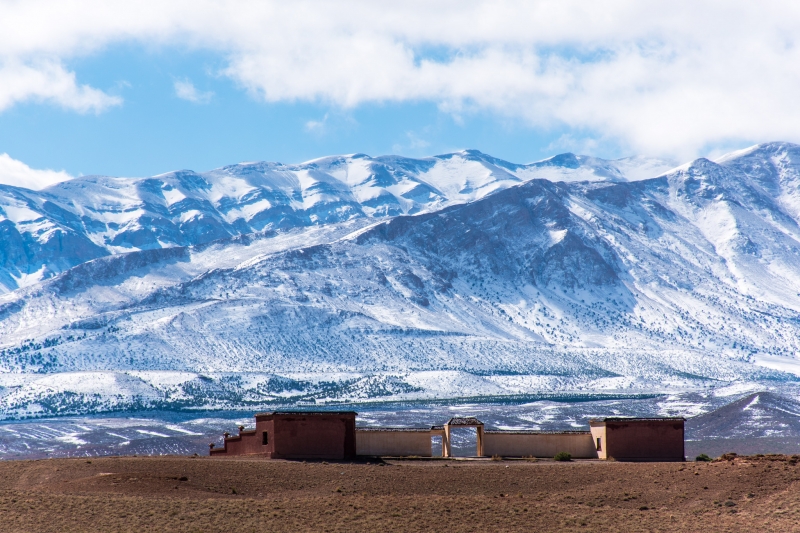
Image credit: Ralf Steinberger
While trekking is possible in the Atlas Mountains throughout the year, spring and autumn are generally the most comfortable. The high temperatures and glaring sun in the summer are often uncomfortable, while the cold conditions of the winter can make higher areas challenging and dangerous. Some parts of the mountains have snow in the wintertime. In spring and autumn, the temperatures are warm and pleasant, without being either too hot or too cold. There may be a little snow on the ground, but nothing that will cause significant problems. These seasons are pretty dry too.
Best Places to Hike in the Atlas Mountains
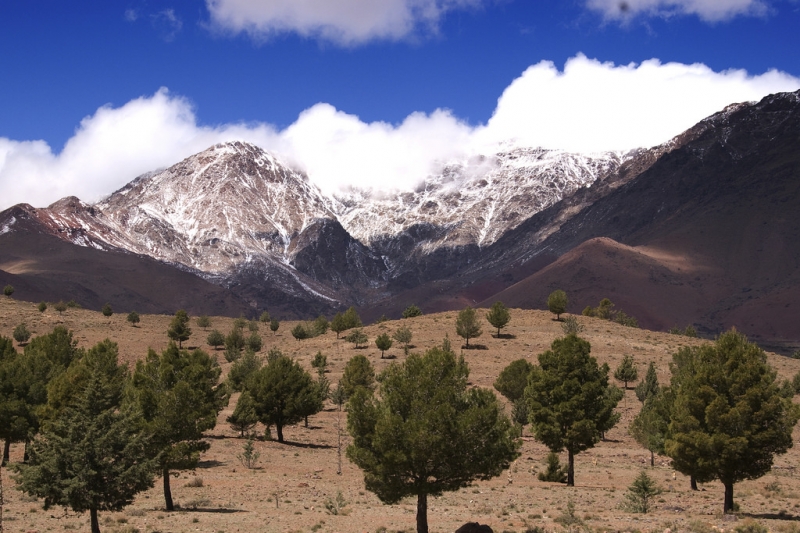
Image credit: Anna & Michal
Jbel Toubkal is often a draw for serious hikers. As the highest mountain in North Africa, it can be a challenge to climb! Conquering the majestic peak takes a few days, leading through traditional villages and varied terrain.
The Toubkal Circuit is another favourite route for experienced hikers. Crossing soaring mountains and winding through craggy valleys, the circuit typically takes around a week to complete.
The M’Goun Massif has a number of trails that vary in length and difficulty. Follow the M’Goun Circuit for around six days, hiking up M’Goun peak, crossing the Aghouri Pass, seeing the Tarkedit Plateau, and walking through Ain Aflafal valley.
The remote valley of Ait Bouguemez is considered to be one of Morocco’s most picturesque places. The valley and lakes have several scenic walking routes. Other top places in the High Atlas Mountains include Puanoukrim Mountain, the Dades Gorge, and the Todra Gorge.
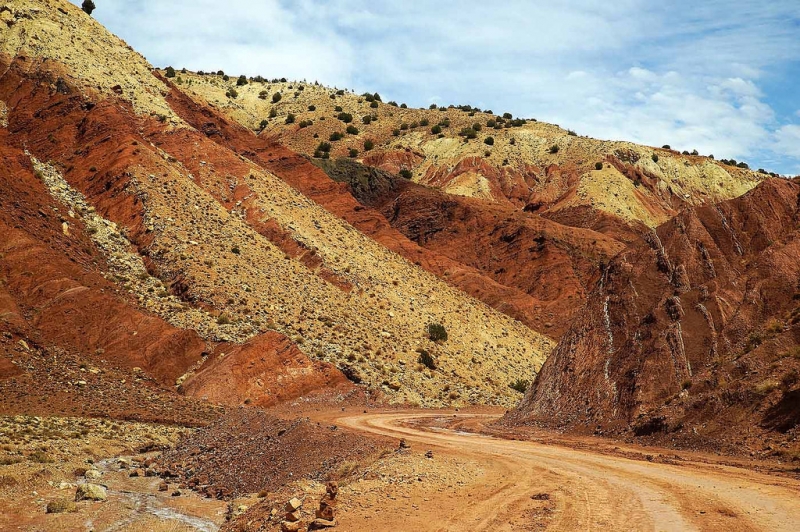
Image credit: Heribert Bechen
In the Middle Atlas Mountains, Ifrane National Park is a great place to enjoy diverse walks among the cedar trees. You may also spot Barbary macaques. Tazekka National Park is also home to diverse wildlife and there are caves, canyons, and waterfalls.
Set yourself a challenge and climb to the top of Jbel Mouasker, Jbel Bou Naceur, or Jbel Bou Iblane. Hike in Khenifra’s Aguelma Azigza National Park and admire the scenic waterfall at the start of the Oum Er-Rbia River.
The Anti Atlas Mountains, also known as the Lesser Atlas Mountains, offers even more outdoor fun. This is one of the best places in the country to see the bizarre tree-climbing goats munching on the fruit of the argan tree. Jbel Saghro is a beautiful mountain to climb. Sitting at the edge of the Sahara Desert, you can incorporate stunning viewpoints and ancient cave paintings into your adventures.
The Ameln Valley and Paradise Valley offer more hiking opportunities, and Jbel Aklim provides beautiful views as you hike in scenic surroundings.
Independent Hiking Versus Guide-Lead Treks
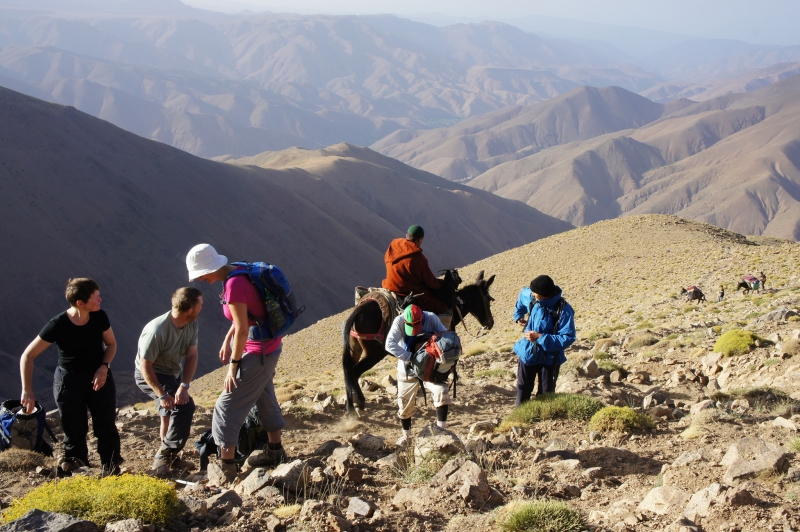
Image credit: Chris
Depending on where and when you go hiking in Morocco, you may feel more comfortable arranging a local guide. However, many shorter trails are easy and can be enjoyed independently. For safety, get a guide when embarking on longer multi-day treks. Plus, you’ll have a mule to transport your belongings. Many operators arrange hiking adventures in the Atlas Mountains.
Other Activities in the Atlas Mountains
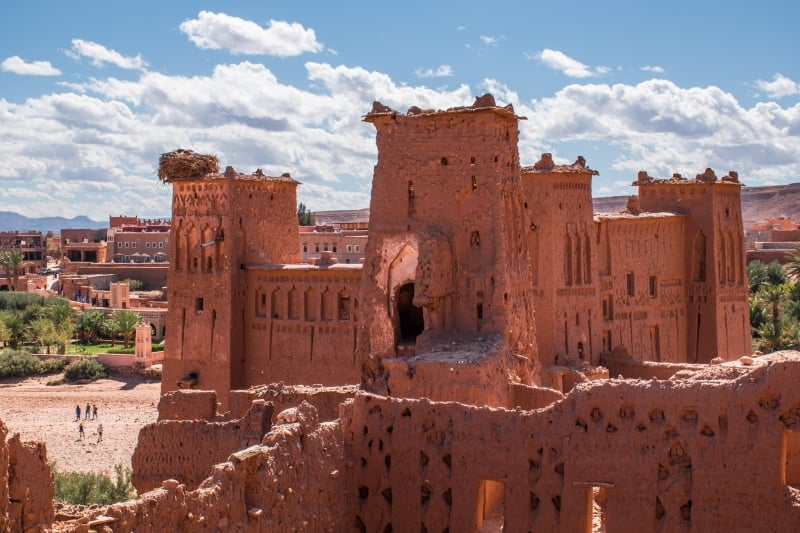
Image credit: Ralf Steinberger
Along with a multitude of hikes, the Atlas Mountains also offer a variety of other activities. Explore splendid areas on horseback, bump across the landscapes in a 4WD, join specialist wildlife- and bird-watching tours, go climbing, and rafting in gushing rivers. In the winter months, skiing is possible in some mountain areas or Oukaimeden – Morocco’s main skiing destination.
Tips for Hiking in the Atlas Mountains
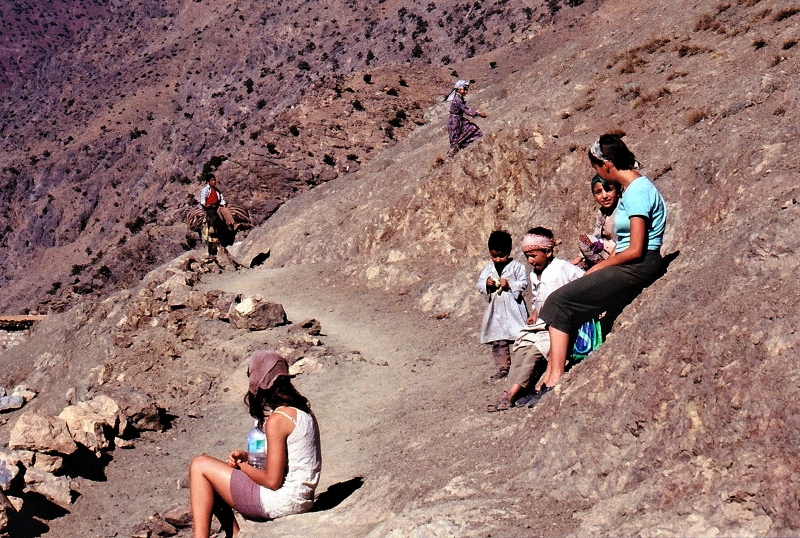
Image credit: Jasmin Halki
- Take time to acclimatise before tackling the taller peaks of the High Atlas Mountains. Altitude sickness can make you feel really sick.
- Wear modest clothes, particularly when passing through mountain villages. Morocco is a fairly conservative nation, particularly in rural areas.
- Pack clothes for all conditions. Daytimes can be warm and evenings cool. Also make sure you have appropriate hiking footwear.
- Although not essential, walking poles can be beneficial. In higher elevations, specialist snow and ice equipment may be needed, especially in the winter months.
- Carry the day-to-day essentials with you in a small daypack; if transported by mule, you won’t have your main pack with you.
- Drink plenty of water while hiking. It can also be worth carrying rehydration formulas with you.
- Ensure you purchase comprehensive travel insurance.
- Be wary of stray animals.
- Take earplugs to help get a restful sleep.
- Protect against the sun with sunscreen, a cap, and long, loose clothing.
- Make sure you have enough cash for the duration of your trek and carry smaller notes as some vendors won’t always have change.
- Avoid swimming in freshwater lakes and streams otherwise you may end up with a parasitic infection.
Morocco’s Atlas Mountains offer many marvelous hiking opportunities; when are you planning to visit?!




